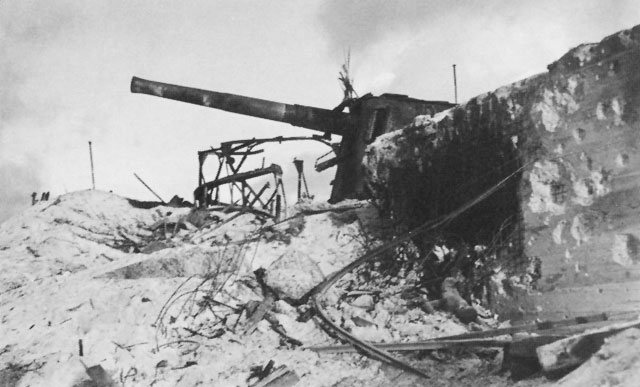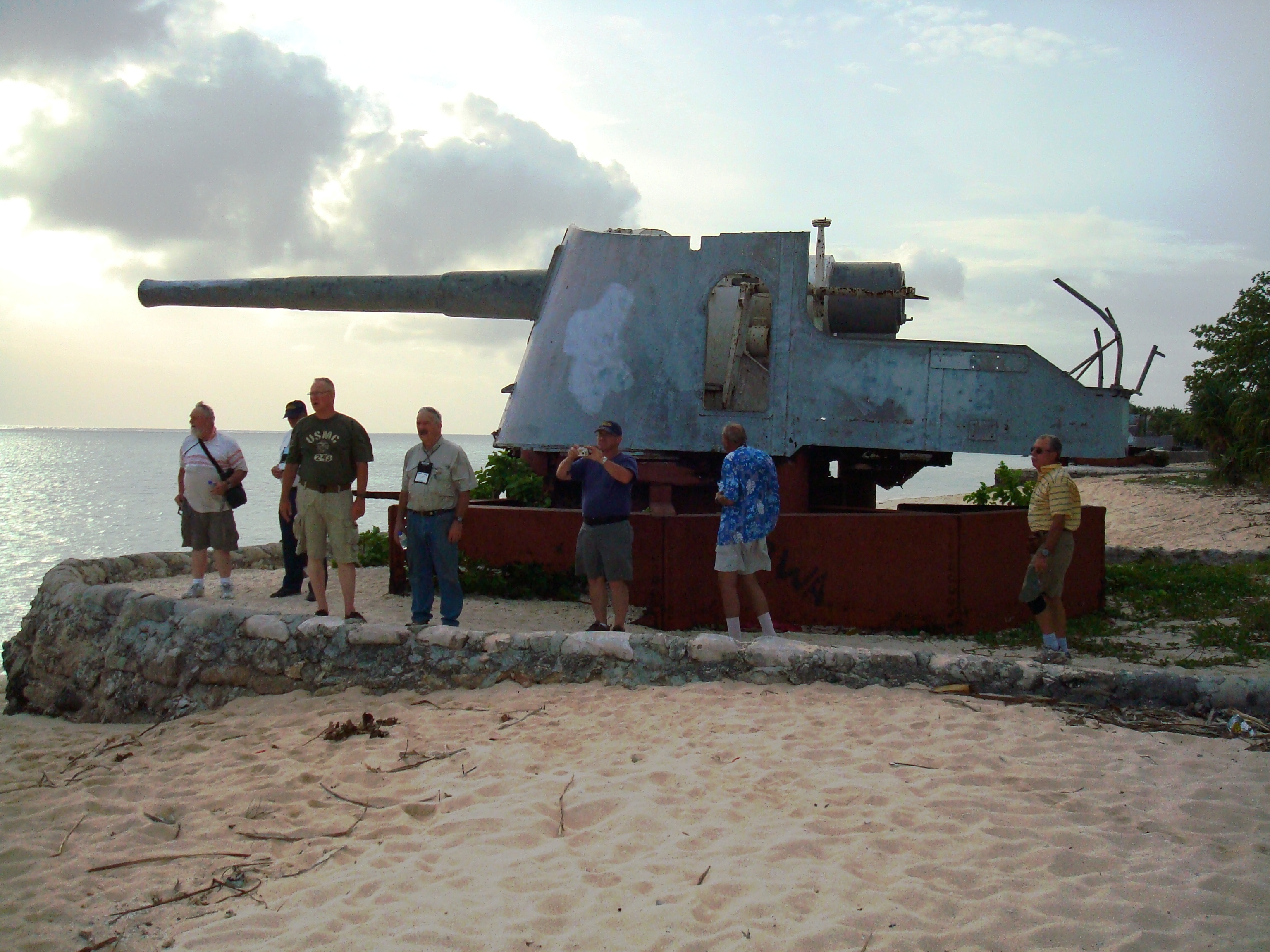Blog 11/20/2020 - The Big Guns of Tarawa
The Battle of Tarawa began today as the first U.S. offensive in the critical central Pacific during WWII. It would be the first time in the Pacific War that the U.S. forces would face serious Japanese opposition to an amphibious landing. The Japanese on Betio Island had a year to prepare their defensive positions. One of the surprises for the U.S. Navy & Marines were the Japanese four 8-inch guns that fired the opening rounds in the battle. As the invasion flotilla closed on the invasion beaches the fact remains that many USN Officers were unpleasantly surprised to experience major caliber near-misses bracketing the amphibious task force early on D-Day.

The island's four 8-inch guns opened fire provoking a gunnery duel soon developed as the main batteries on the battleships Colorado and Maryland commenced rapid counter-battery fire. The USN guns proved accurate, with several of the 16-inch shells finding their marks. One battleship shell penetrated one gun's ammunition storage bunker, setting off a huge explosion and fireball as the ordnance went off. Three of the four guns were knocked out in short order. One continued its intermittent, though inaccurate, fire through the second day as pre-landing USN carrier aircraft bombing raids may have damaged their fire control systems. The naval gunfire damage to the big guns left the approach to the lagoon open.
Colonel David Shoup, USMC who was the architect of the Operation Order stated emphatically that the 2d Marine Division was fully aware of the presence of 8-inch guns on Betio as early as mid-August 1943. However, the division intelligence annex to Shoup's operation order, updated just nine days before the landing, discounts that the main guns were likely to be as large as 8-inch, insisting instead that "they are probably not more than 6-inch." The firing on Betio had barely subsided before unsubstantiated claims began to appear in print that the four 8-inch naval rifles used on Tarawa had been captured from the British during the fall of Singapore. Many prominent historians unwittingly helped perpetuated this story, among them the highly respected Samuel Eliot Morison in his definitive 15 volume "History of United States Naval Operations in World War II." In 1977, British writer William H. Bartsch published the results of personally examining each of the four guns on Tarawa and found markings confirming their manufacture by Vickers, the British Ordnance Company.
Under further investigation at the Imperial War Museum produced evidence that there were no 8-inch guns guarding the approaches of Singapore to be captured. The Vickers, Sons & Maxim Company records provided indicating the guns were part of a consignment of 12 8-inch guns sold in 1905 to the Japanese during the Russo-Japanese War. In truth, the guns at Tarawa came from a legitimate transaction with the British and not the conquest of Singapore in February 1942.
"Bloody Tarawa" Tour (31 Aug - 5 Aug 2021) (miltours.com)


